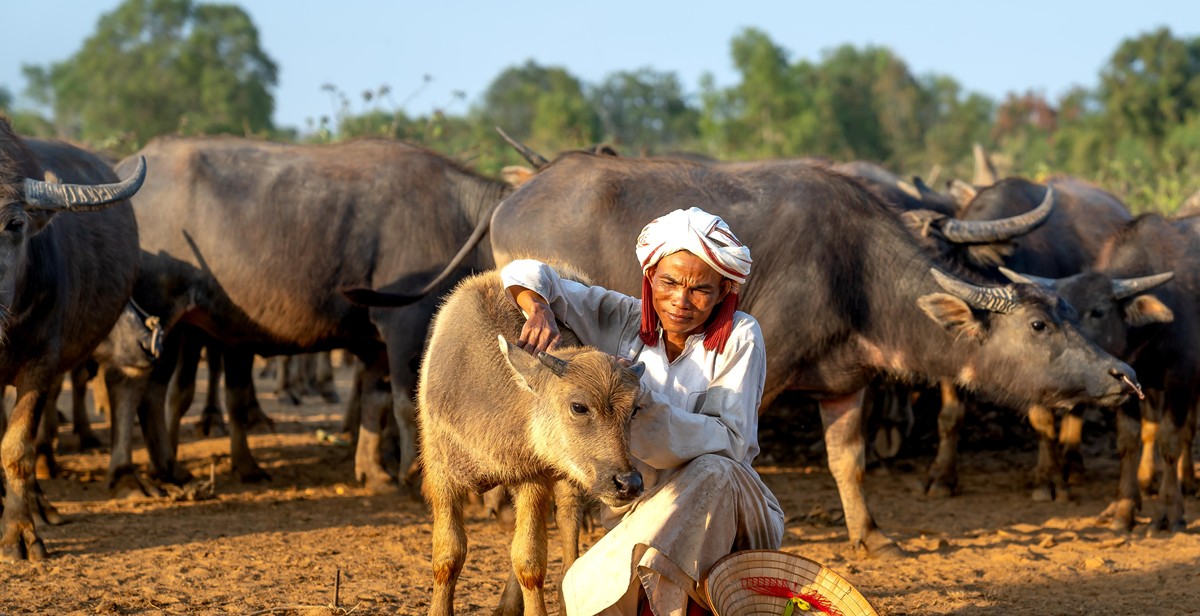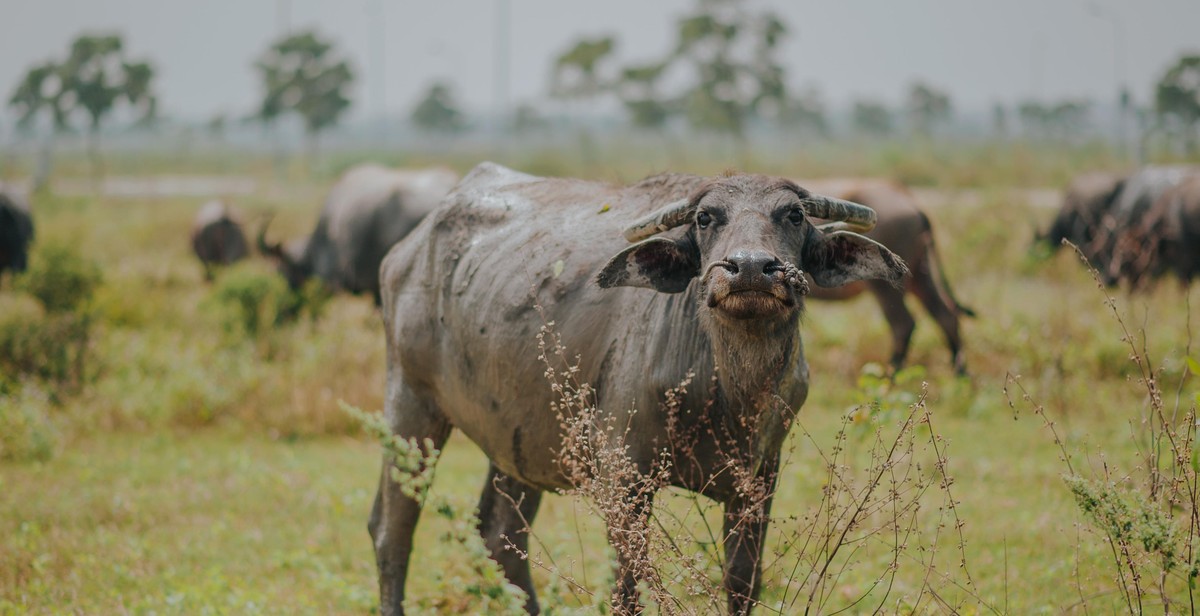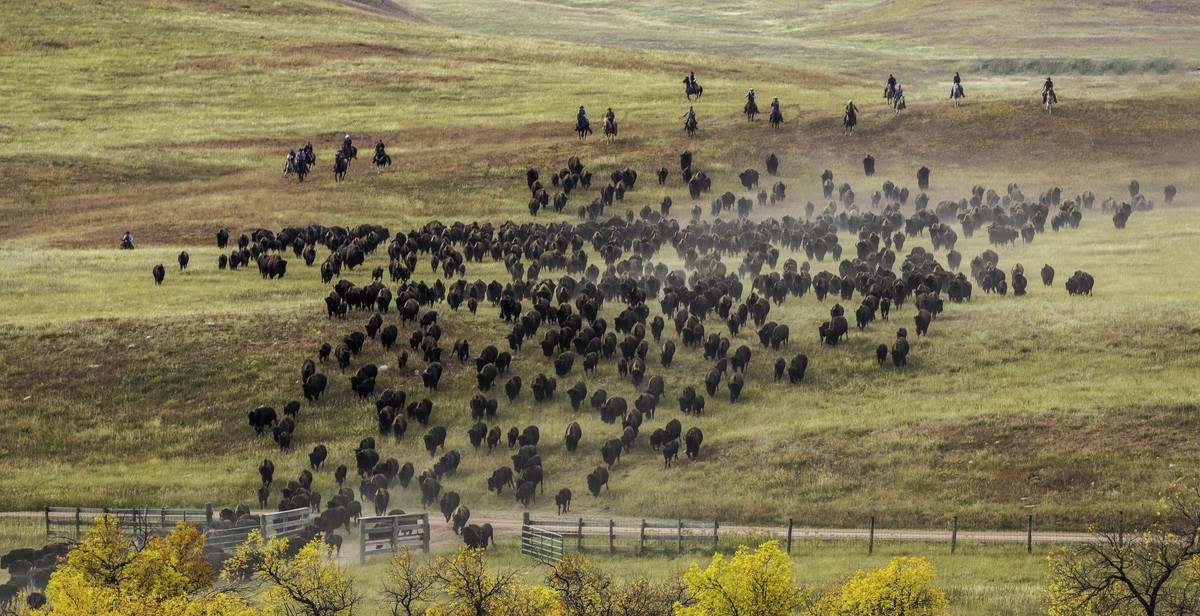How to Start a Buffalo Farm: Steps to Establishing a Successful Commercial Buffalo Operation
Starting a buffalo farm can be an exciting and rewarding venture. Buffaloes are known for their meat, milk, and hides, and they can be raised for meat production, dairy farming, or simply for their wool. However, starting a buffalo farm requires careful planning and preparation to ensure success.
Why Start a Buffalo Farm?
Buffalo farming has become increasingly popular in recent years due to the demand for leaner and healthier meat options. Buffalo meat is low in fat and cholesterol and high in protein, making it a popular choice for health-conscious consumers. Additionally, buffalo milk is higher in protein and lower in cholesterol than cow’s milk, making it a desirable alternative for those with lactose intolerance.
Steps to Establishing a Successful Commercial Buffalo Operation
Establishing a successful commercial buffalo operation requires careful planning and preparation. Here are some steps to consider:
- Research and planning: Conduct thorough research to determine if there is a demand for buffalo products in your area and identify potential competitors. Develop a business plan that outlines your goals, strategies, and financial projections.
- Land and facilities: Secure land that is suitable for buffalo farming and build or acquire facilities that are designed for buffalo comfort and safety.
- Buffalo selection: Choose high-quality buffalo breeds that are suitable for your intended purpose, whether it’s meat or dairy production.
- Feeding and nutrition: Develop a feeding and nutrition plan that meets the nutritional needs of your buffalo and maximizes their growth and productivity.
- Healthcare and management: Establish a healthcare and management plan that includes regular checkups, vaccinations, and disease prevention measures.
- Marketing and sales: Develop a marketing and sales strategy that targets your intended customers and highlights the benefits of buffalo products.
By following these steps and taking a strategic approach, you can establish a successful commercial buffalo operation that meets the demand for healthy and sustainable meat and dairy products.

Step 1: Conduct Market Research
Before starting a buffalo farm, it’s essential to conduct market research to understand the demand for buffalo products in your area. This research will help you identify your target market and analyze your competitors.
Identify Your Target Market
You need to know who your potential customers are. Buffalo meat and dairy products have a niche market, and it’s crucial to understand who your target customers are. Are they health-conscious consumers looking for organic meat? Are they foodies looking for exotic meats? Are they individuals with dietary restrictions? Answering these questions will help you create a marketing strategy that will resonate with your target customers.
Analyze Your Competitors
Knowing your competitors’ strengths and weaknesses is vital to the success of your buffalo farm. Research other buffalo farms in your area and determine what products they offer, their pricing, marketing strategies, and customer base. This information will help you differentiate your business and create a unique selling proposition.
| Category | Questions |
|---|---|
| Products | What products do they offer? Are they organic? Grass-fed? |
| Pricing | What are their prices for different products? |
| Marketing | What are their marketing strategies? Do they use social media? Advertisements? |
| Customer Base | Who are their customers? What is their demographic? |
By conducting market research, you’ll have a better understanding of your target market and competitors. This knowledge will help you make informed decisions and increase the chances of success for your buffalo farm.

Step 2: Choose Your Location
Choosing the right location for your buffalo farm is crucial to the success of your business. Here are some important factors to consider:
Climate and Weather
Buffalo thrive in cooler climates, so it’s important to choose a location that offers mild to moderate temperatures year-round. Extreme heat or cold can cause stress and health problems for your herd, which can lead to decreased productivity and profitability. Additionally, consider the amount of precipitation in the area, as buffalo require a certain amount of water to thrive.
Look for Suitable Land
Buffalo require a large amount of land to graze and roam, so it’s important to choose a location with enough space to accommodate your herd. Look for land that is flat or gently sloping, with good drainage and access to water sources. Additionally, consider the quality of the soil and the availability of vegetation, as these factors can affect the health and productivity of your herd.
- Choose a location with mild to moderate temperatures year-round
- Ensure there is enough space for your herd to graze and roam
- Look for land with good drainage and access to water sources
- Consider the quality of the soil and availability of vegetation

Step 3: Decide on Your Business Structure
Choosing the right business structure is an important step in starting a buffalo farm. The four most common business structures are:
- Sole Proprietorship: This is the simplest business structure and is suitable for a single buffalo farmer who wants complete control over the business. However, the owner is personally liable for all debts and legal issues.
- Partnership: A partnership is suitable for two or more buffalo farmers who want to share profits and responsibilities. However, each partner is personally liable for the business.
- Limited Liability Company (LLC): An LLC is a hybrid structure that combines the benefits of a corporation and a partnership. It offers limited liability protection to owners and is suitable for multiple buffalo farmers.
- Corporation: This is a separate legal entity that offers limited liability protection to shareholders. It is suitable for larger buffalo farms with multiple owners and investors.
Consult with a lawyer or accountant to determine the best business structure for your buffalo farm based on your goals and financial situation.

Step 4: Create a Business Plan
Creating a comprehensive business plan is crucial for the success of any commercial buffalo operation. It will serve as a roadmap to guide you towards achieving your goals and help you secure funding from investors or lenders. Here are the key elements to include:
Executive Summary
This section should provide a brief overview of your buffalo farm and its goals. It should include your mission statement, business structure, management team, and financial projections.
Company Description
In this section, you should provide a detailed description of your buffalo farm, including its history, location, facilities, and equipment. You should also describe your target market and how you plan to serve it.
Market Analysis
Here, you should conduct a thorough analysis of the buffalo industry, including market trends, competition, and potential risks. You should also identify your unique selling proposition and how you plan to differentiate your farm from others in the market.
Organization and Management
This section should outline the organizational structure of your buffalo farm, including the roles and responsibilities of each team member. You should also describe your management team’s experience and qualifications.
Products and Services
In this section, you should describe the products and services you plan to offer, including the different cuts of buffalo meat, hides, and other byproducts. You should also explain how you plan to source and process your products.
Marketing and Sales Strategies
Here, you should outline your marketing and sales strategies, including your pricing strategy, distribution channels, and promotional activities. You should also identify your target customers and how you plan to reach them.
Financial Projections
This section should include your financial projections for the next three to five years, including your income statement, balance sheet, and cash flow statement. You should also include your funding requirements and how you plan to use the funds.

Step 5: Secure Financing
Starting a commercial buffalo farm requires a significant amount of capital. Therefore, securing financing is crucial. Here are some financing options:
Traditional Bank Loans
Traditional bank loans are a common financing option for businesses. However, getting approved for a loan can be challenging, especially if you lack collateral or have a weak credit history. It’s essential to have a solid business plan and financial projections to increase your chances of approval.
Small Business Administration (SBA) Loans
The Small Business Administration (SBA) offers loans to small businesses, including farmers. SBA loans have lower interest rates and longer repayment terms than traditional bank loans. However, the application process can be lengthy and time-consuming.
Grants and Other Funding Options
There are various grants and funding options available for farmers, including those offered by the USDA and state agriculture departments. These options typically require a detailed application process, and competition can be fierce. However, they can provide significant financial assistance to start or expand your buffalo farm.
| Financing Option | Pros | Cons |
|---|---|---|
| Traditional Bank Loans | Lower interest rates than some other financing options | Challenging application process and requirements |
| SBA Loans | Lower interest rates and longer repayment terms than traditional bank loans | Lengthy and time-consuming application process |
| Grants and Other Funding Options | Significant financial assistance for farmers | Competitive application process and requirements |
Consider consulting with a financial advisor or accountant to determine the best financing option for your buffalo farm.

Step 6: Purchase Equipment and Supplies
Before starting your commercial buffalo operation, you need to make sure you have all the necessary equipment and supplies to take care of your animals. Here are some of the essential items you’ll need:
Fencing and Gates
Buffalo are large and strong animals, so you need to invest in sturdy fencing and gates to keep them contained. High tensile wire fencing is a popular choice, but you can also consider wooden or vinyl fencing. Make sure your fencing is at least 5 feet high and buried at least 2 feet deep to prevent the buffalo from digging under it.
Watering and Feeding Equipment
Buffalo require plenty of fresh water and hay to stay healthy. You’ll need to invest in watering and feeding equipment, such as automatic waterers and hay feeders, to ensure your animals have access to clean water and food at all times.
Barns and Shelters
Buffalo can withstand harsh weather conditions, but they still need protection from extreme heat, cold, and wind. You’ll need to invest in barns or shelters to keep your animals safe and comfortable. Consider building a shelter that’s large enough to accommodate all your buffalo and has proper ventilation and drainage.
Handling Equipment
Buffalo can be difficult to handle, especially if they’re not used to human interaction. You’ll need to invest in handling equipment, such as chutes and corrals, to safely move and handle your animals. Make sure your equipment is sturdy and properly maintained to prevent injuries to both humans and buffalo.
Investing in high-quality equipment and supplies is essential to the success of your commercial buffalo operation. Make sure to do your research and choose products that are durable, safe, and efficient.

Step 7: Acquire Your Herd
Acquiring your herd is a crucial step in establishing a successful commercial buffalo operation. There are two primary ways to acquire buffalo: selecting breeding stock or buying calves or yearlings.
Selecting Breeding Stock
If you plan to breed your own buffalo, selecting the right breeding stock is essential. Look for buffalo with desirable physical traits, such as good conformation and size. You should also consider the animal’s genetics, temperament, and overall health. Be sure to choose buffalo that are free from any genetic defects or diseases that could be passed on to their offspring.
Buying Calves or Yearlings
If you’re not interested in breeding buffalo, you can purchase calves or yearlings to start your herd. When buying buffalo, look for animals that are healthy and free from any diseases. You should also consider the animal’s size and conformation, as well as their temperament.
| Pros of Selecting Breeding Stock | Pros of Buying Calves or Yearlings |
|---|---|
| Allows you to control the genetics of your herd | Less expensive than purchasing breeding stock |
| Can produce higher-quality offspring | Easier to manage and care for |
Regardless of which method you choose, be sure to purchase your buffalo from a reputable breeder or supplier. This will ensure that you’re getting healthy animals that are free from any diseases or genetic defects.

Step 8: Develop a Health and Nutrition Plan
Keeping your buffalo herd healthy is crucial to your success as a commercial buffalo farmer. Developing a comprehensive health and nutrition plan can help prevent diseases and ensure optimal growth and production.
Vaccinations and Disease Prevention
Consult with a veterinarian to determine the appropriate vaccination schedule for your buffalo herd. Common vaccines include those for respiratory diseases, clostridial diseases, and brucellosis. It is also important to implement biosecurity measures, such as controlling visitor access, quarantining new animals, and regularly disinfecting equipment and facilities, to prevent the spread of diseases.
Feeding and Nutrition
Buffalo have unique nutritional requirements and need a balanced diet to ensure optimal growth and production. A nutrition plan should include a combination of pasture grazing, hay, and supplemental feed. Work with a nutritionist to develop a feeding plan that meets the specific needs of your herd and adjust it as necessary based on factors such as age, weight, and production goals.
| Nutrient | Requirement |
|---|---|
| Crude Protein | 12-16% |
| Fiber | 18-25% |
| Fat | 3-5% |
| Minerals | Calcium, Phosphorus, Magnesium, Potassium, and Sodium |
A healthy and well-fed buffalo herd will be more productive and profitable in the long run.

Step 9: Implement Record-Keeping and Management Systems
Keeping track of your buffalo farm’s performance is essential to its success. Implementing record-keeping and management systems will help you keep track of your farm’s progress and make informed decisions.
Herd Management Software
One way to keep track of your buffalo herd is by using herd management software. This software helps you keep track of your buffalo’s health, breeding, and production records. It also helps you identify any potential health issues and manage your herd’s growth. Some popular herd management software options include:
- Agrivi
- CattleMax
- AgriWebb
Financial Management Software
Financial management software helps you keep track of your farm’s financial performance. It helps you manage your expenses, track your income, and create financial reports. Some popular financial management software options include:
- QuickBooks
- Xero
- Farm Biz
Implementing these systems will help you manage your buffalo farm more efficiently, make informed decisions, and improve your farm’s profitability.

Step 10: Market and Sell Your Products
After establishing your commercial buffalo operation, it is essential to identify your target market. Knowing your audience helps you tailor your products and marketing strategies to meet their needs and preferences. Potential buyers include meat shops, restaurants, and individuals who prefer buffalo meat over other types of meat.
Develop a Marketing Plan
Developing a marketing plan helps you reach your target market effectively. You can take advantage of social media platforms, such as Facebook and Instagram, to promote your products. You can also attend agricultural fairs and trade shows to network with potential buyers and showcase your products.
Sell Your Products
Buffalo meat is a niche product, and you need to sell it at a premium price to make a profit. You can sell your products directly to consumers, or you can partner with local meat shops and restaurants to increase your customer base. Offering discounts, loyalty programs, and other incentives can help you retain customers and attract new ones.
| Steps | Description |
|---|---|
| Identify Your Target Market | Know your audience to tailor your products and marketing strategies |
| Develop a Marketing Plan | Use social media and attend trade shows to promote your products |
| Sell Your Products | Sell at a premium price, partner with local shops and restaurants, and offer incentives to retain and attract customers |

Conclusion
Starting a buffalo farm may seem like a daunting task, but with careful planning and research, it can be a profitable and rewarding venture. Remember to start small and expand gradually, considering factors such as location, fencing, feeding, and breeding. It is also crucial to comply with legal requirements and obtain necessary permits and licenses.
When it comes to marketing, explore various channels such as farmers’ markets, online platforms, and local restaurants and retailers. Build a strong brand identity and reputation by emphasizing the unique qualities of buffalo meat, such as its nutritional value and sustainability.
As a seasoned article writer and content creator, I have seen the importance of quality content in promoting businesses and engaging customers. Therefore, consider investing in professional website design, social media management, and content marketing to reach a wider audience and build a loyal customer base.
Finally, be prepared for challenges such as disease outbreaks, natural disasters, and market fluctuations. Stay informed and adaptable, and seek advice from other buffalo farmers and industry experts. With dedication, perseverance, and a passion for sustainable agriculture, you can establish a successful commercial buffalo operation that benefits both your business and the environment.
